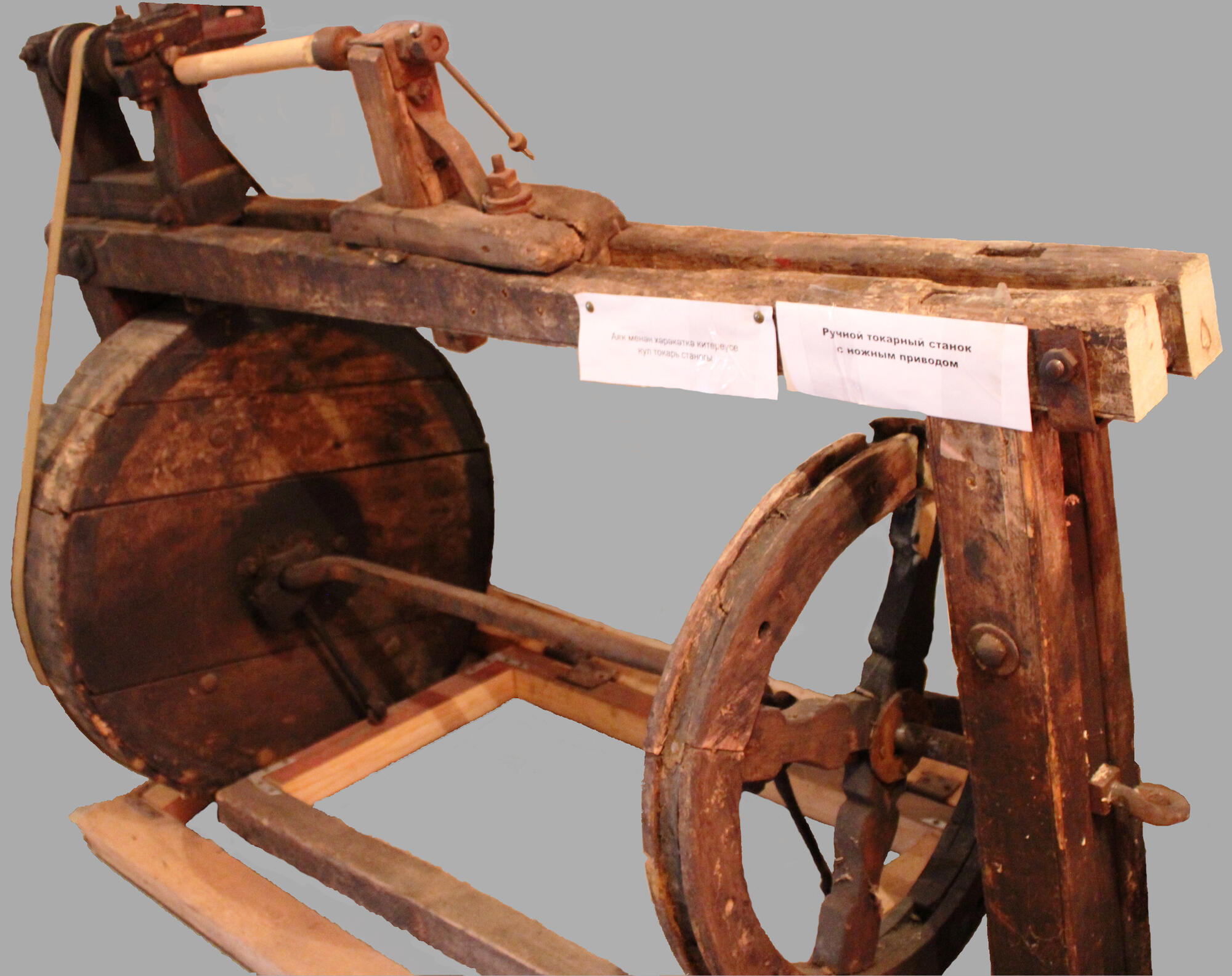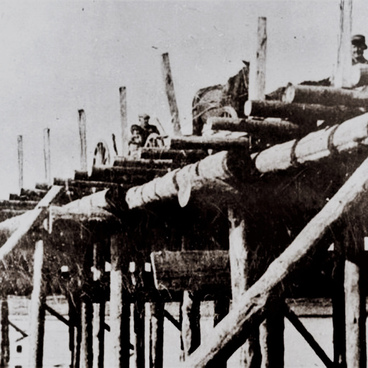A lathe is a machine tool that rotates a workpiece about an axis of rotation to perform various operations. For example, a lathe can be used for making a screw thread or turning. Сollection of the Ishimbay Museum of History and Local Lore contains a foot-operated wood lathe. Manufactured in the 20th century, it served either as a personal tool or as piece of equipment utilized in a small-scale production.
The lathe is believed to be the oldest machine tool. It is likely to have evolved from the more primitive drilling machines that were powered by a taut bowstring wrapped around them. Subsequently, other machine tools also began to emerge as already existing hand tools were adapted for various energy sources. However, the lathe is based on a unique design.
According to archaeologists, the lathe was definitely used as early as the 8th century BC, and possibly even in the 10th century BC or earlier. This dating is supported by an Etruscan ball that belongs to the 7th century BC and has visible traces that are typical of lathe work. The first known depiction of a lathe was discovered in Egypt and dates back to the 3rd century BC. Turnery was widespread throughout most of Europe and the Middle East as early as the 2nd century BC. Generally, scientists believe that the lathe was invented around the time of the discovery of rotational motion.
Early lathes were powered by bows that were installed on the machine and produced a reciprocating motion. This type of driving mechanism persisted until the 14th century, when lathes began to feature a cylinder for wrapping the bowstring that was separate from the workpiece itself. Around the same time, a more advanced large-wheel drive system was introduced by Leonardo da Vinci, who invented a foot pedal linkage system that was connected to a crankshaft and was fitted with a flywheel. This same design lies at the heart of the modern electric lathe, which can work with greater precision and at a higher speed, while preserving the same basic functionality.
The lathe is believed to be the oldest machine tool. It is likely to have evolved from the more primitive drilling machines that were powered by a taut bowstring wrapped around them. Subsequently, other machine tools also began to emerge as already existing hand tools were adapted for various energy sources. However, the lathe is based on a unique design.
According to archaeologists, the lathe was definitely used as early as the 8th century BC, and possibly even in the 10th century BC or earlier. This dating is supported by an Etruscan ball that belongs to the 7th century BC and has visible traces that are typical of lathe work. The first known depiction of a lathe was discovered in Egypt and dates back to the 3rd century BC. Turnery was widespread throughout most of Europe and the Middle East as early as the 2nd century BC. Generally, scientists believe that the lathe was invented around the time of the discovery of rotational motion.
Early lathes were powered by bows that were installed on the machine and produced a reciprocating motion. This type of driving mechanism persisted until the 14th century, when lathes began to feature a cylinder for wrapping the bowstring that was separate from the workpiece itself. Around the same time, a more advanced large-wheel drive system was introduced by Leonardo da Vinci, who invented a foot pedal linkage system that was connected to a crankshaft and was fitted with a flywheel. This same design lies at the heart of the modern electric lathe, which can work with greater precision and at a higher speed, while preserving the same basic functionality.



